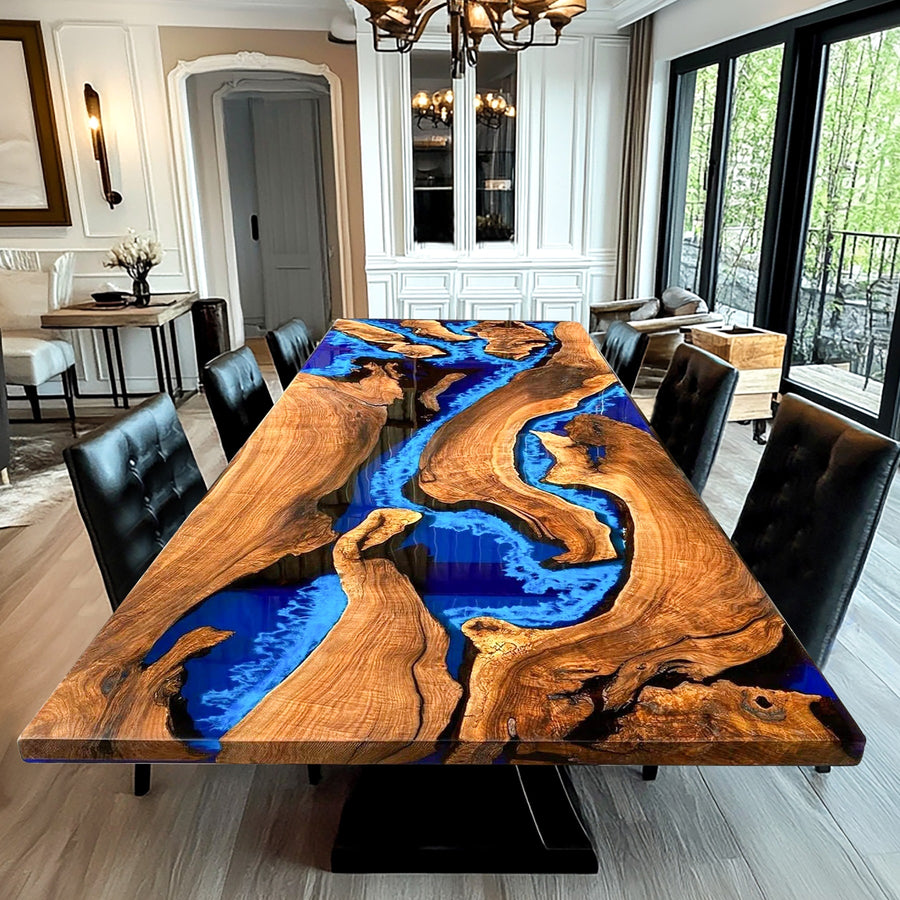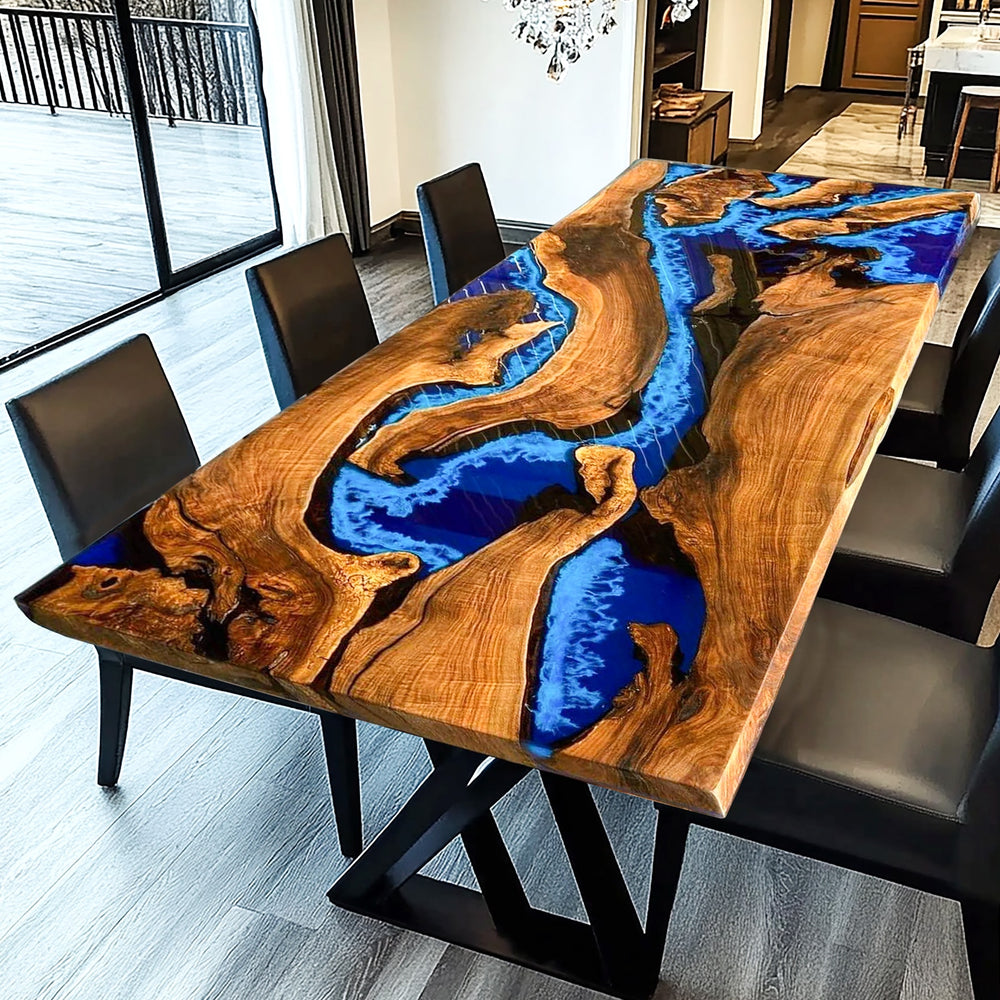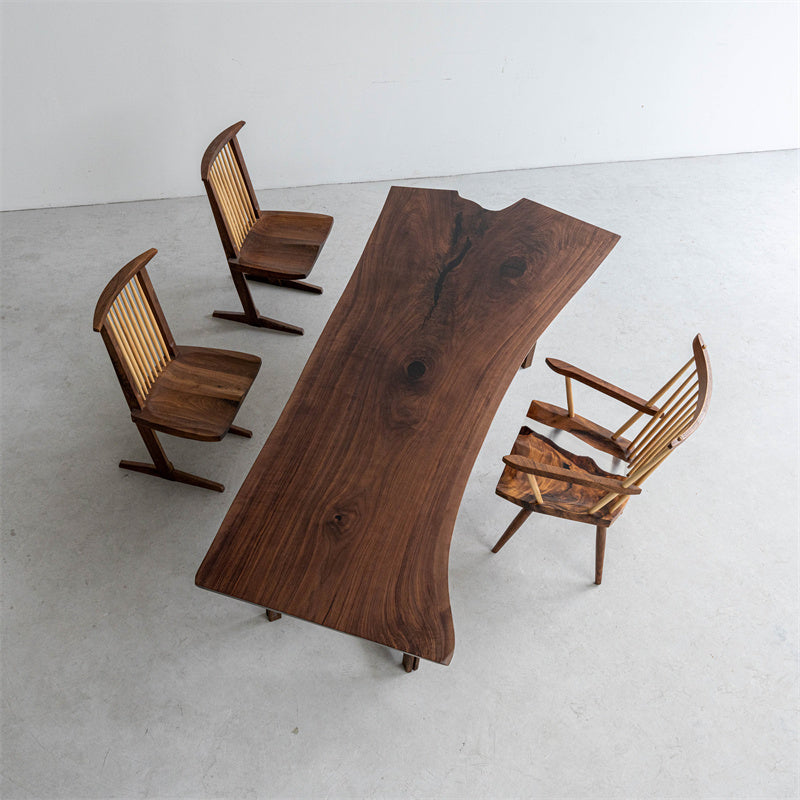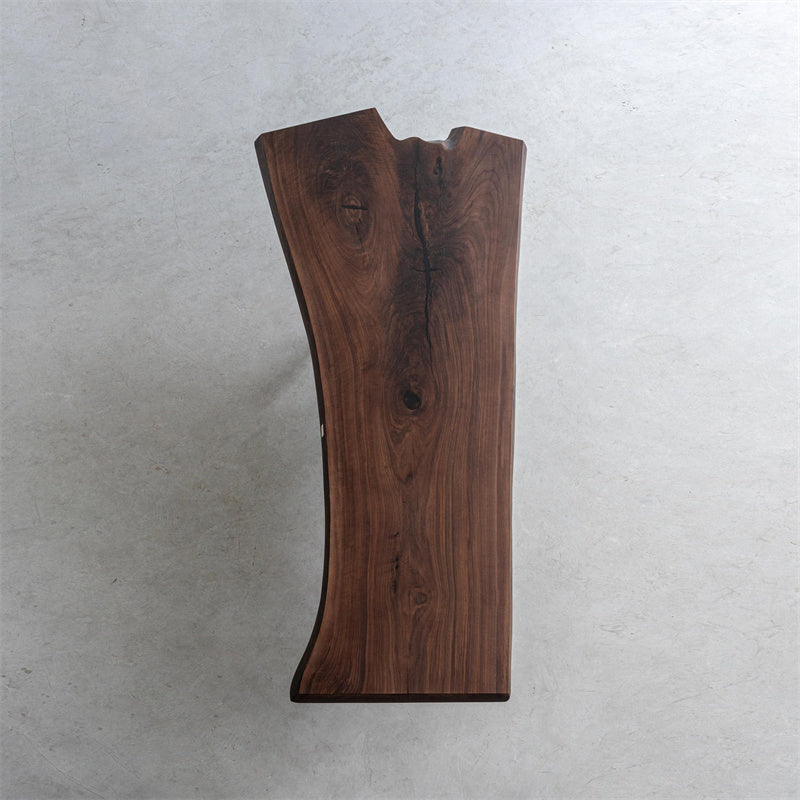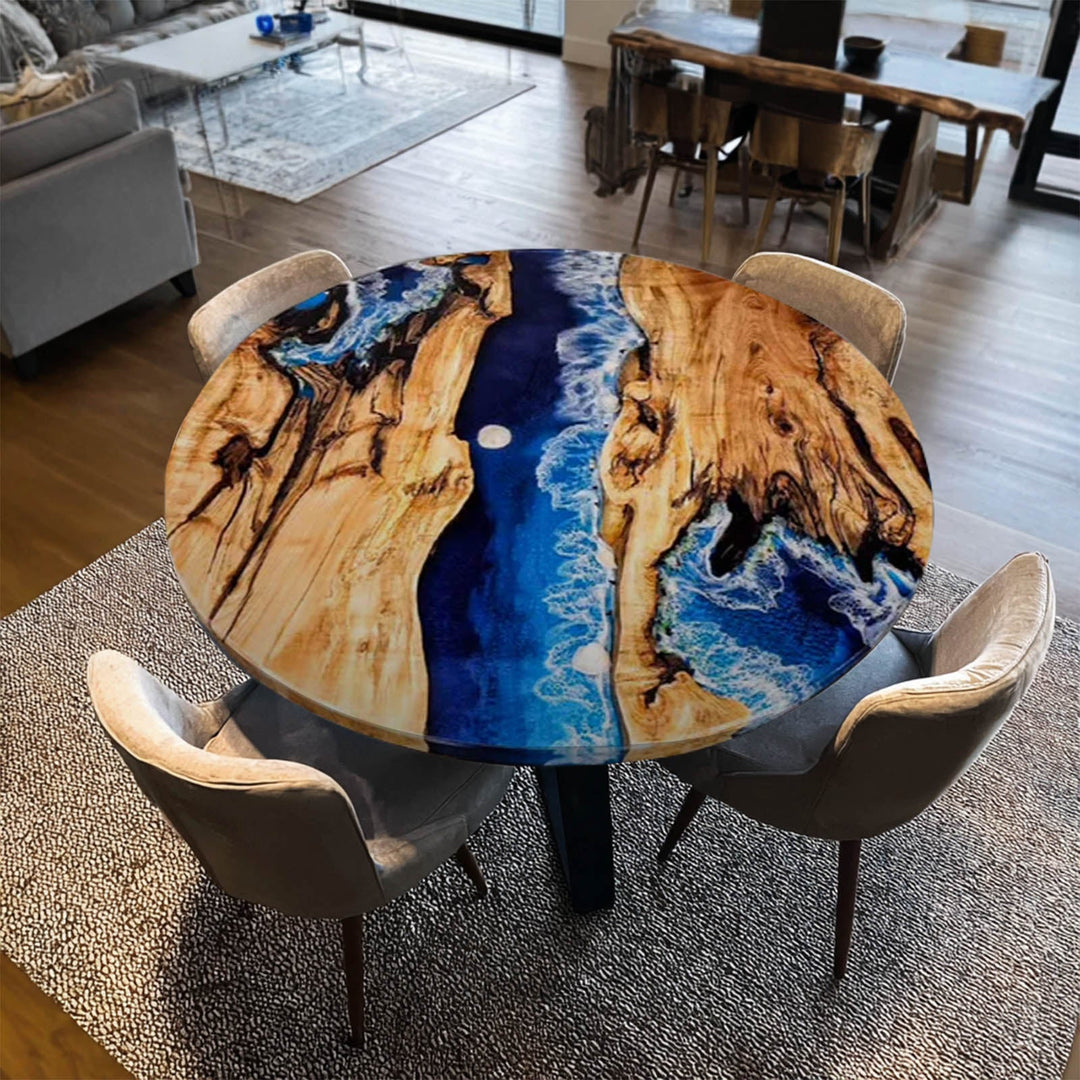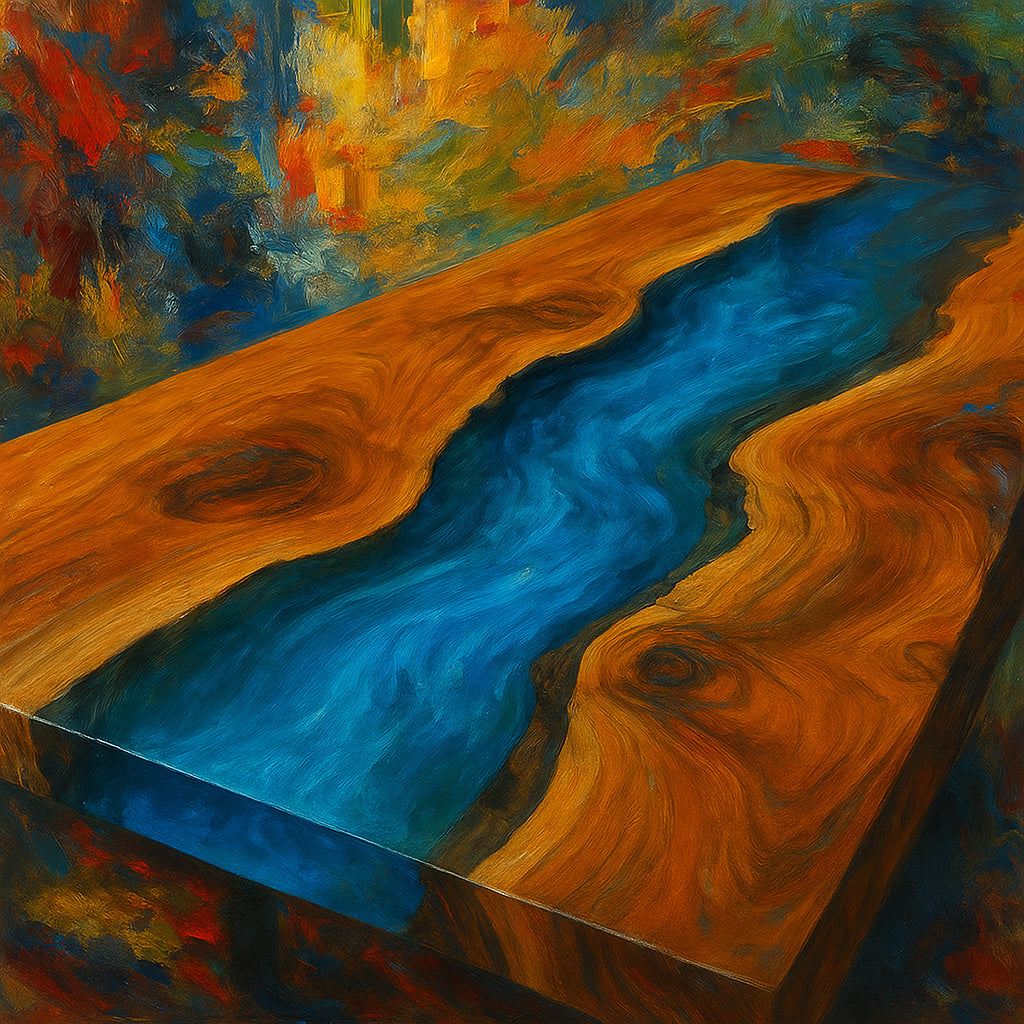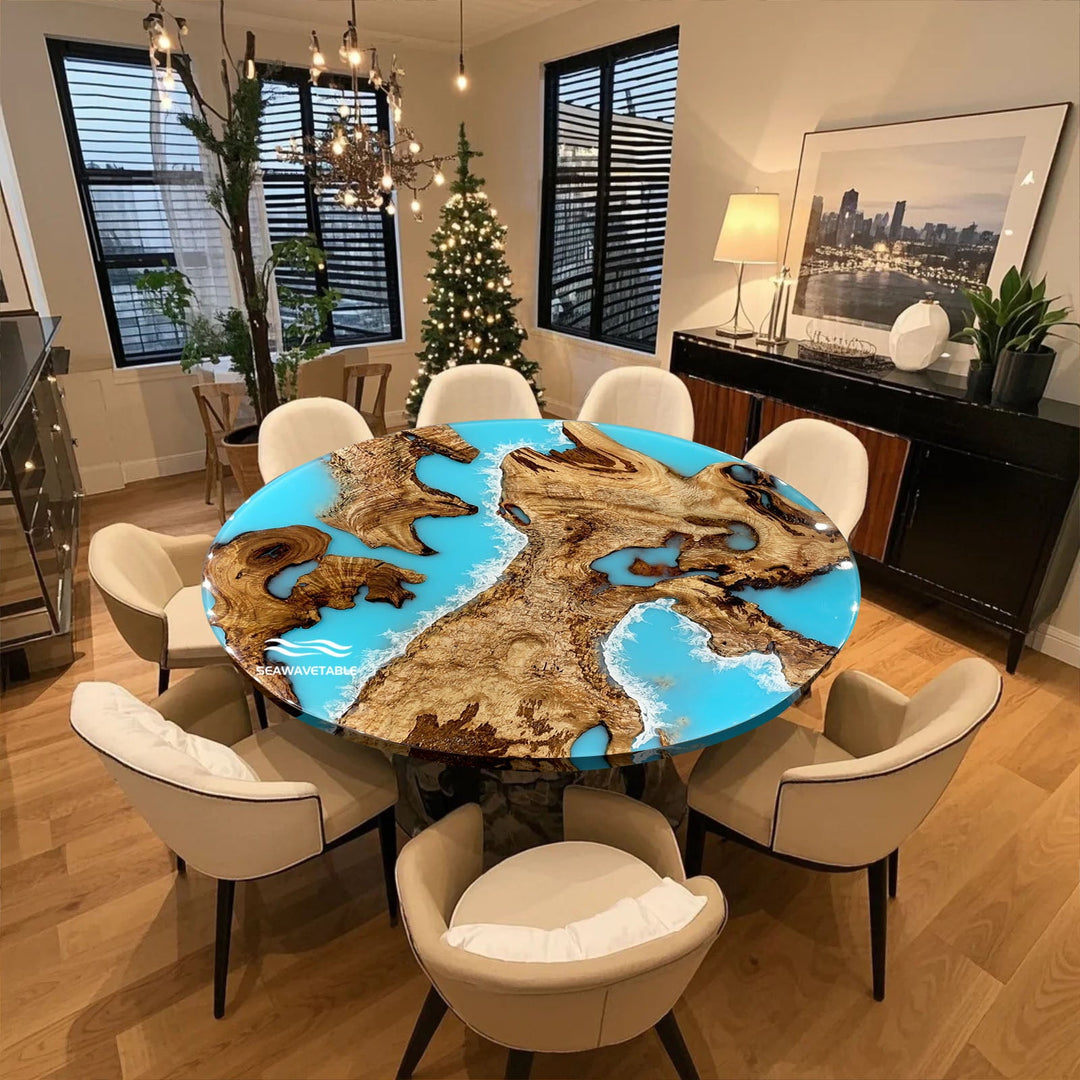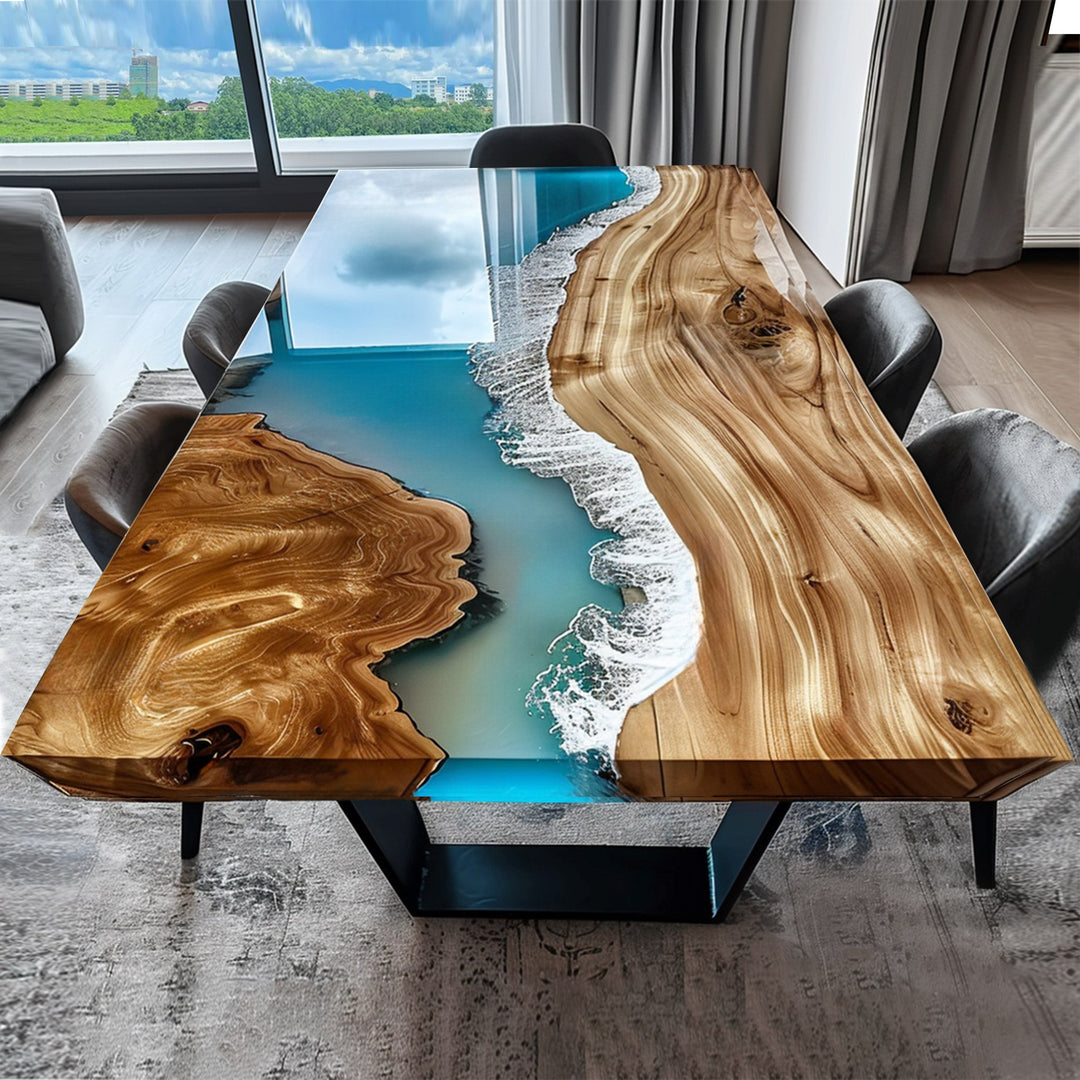The Realities of Live Edge Slabs: Common Problems and How to Handle Them
Live edge slabs captivate with their natural beauty, but working with them can present unique challenges that require thoughtful solutions. From addressing defects to managing environmental factors, understanding these issues is key to creating a stunning, durable piece. In this guide, we break down the most common problems with live edge slabs and share practical tips for overcoming them.

1. Embracing and Fixing Natural Defects
Knots, cracks, and bark inclusions give live edge slabs their charm, but they also pose challenges.
- Problem: Cracks can weaken the slab, and knots might interfere with the sanding or finishing process.
- Solution: Fill cracks with clear or tinted epoxy resin for a seamless look. Use decorative bowtie inlays to stabilize major splits while adding a custom design element.
2. Hidden Hazards in Urban Wood
Urban trees often hold surprises that can derail your project.
- Problem: Foreign objects like nails or screws embedded in the wood can damage tools and compromise safety.
- Solution: Always inspect slabs with a metal detector before milling. Carefully remove any embedded items to protect your tools and maintain the slab’s integrity.
3. Preventing Sunlight Damage During Drying
Proper drying is crucial for maintaining the quality of live edge slabs.
- Problem: Overexposure to direct sunlight can delaminate the wood grain and make the slab brittle.
- Solution: Dry slabs in a shaded, ventilated area. Use a moisture meter to monitor the drying process and avoid uneven results.
4. Identifying and Managing Ring Shake
Ring shake can compromise the usability of a slab but doesn’t have to be the end of the road.
- Problem: Hidden cracks along growth rings can weaken the slab and make it difficult to work with.
- Solution: Adjust your cutting strategy to maximize usable wood. Turn severely affected slabs into smaller lumber or repurpose them for artistic projects.
5. Turning Voids and Rot into Design Opportunities
Voids and rot can be transformed from flaws into features with the right approach.
- Problem: Rot or insect damage creates large voids that weaken the slab.
- Solution: Reinforce voids with epoxy resin, turning them into stunning visual highlights. For severe damage, cut the slab into smaller pieces to salvage workable sections.
Conclusion: Create with Confidence
Crafting with live edge slabs can be challenging, but these hurdles are opportunities to showcase your creativity and skill. By addressing common issues head-on—like natural defects, urban hazards, sunlight damage, and structural concerns—you can transform any slab into a masterpiece.
Need expert advice or premium slabs for your next project? Contact SeawaveTable today and let’s make your woodworking vision a reality!


